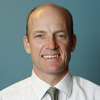 This week, Dr. Richard Kline of The Center for Natural Breast Reconstruction answers your questions.
This week, Dr. Richard Kline of The Center for Natural Breast Reconstruction answers your questions.
Q: I had breast reconstruction surgery 5 years ago.
Upon my 5-year check up, three lumps were found on my left breast. I had an ultrasound, then an MRI. I just received a call from my general physician informing me that I need a biopsy done due to fat necrosis on my left breast. Meanwhile, I have found many more lumps on both breasts. I’m waiting for my plastic surgeon to return from vacation to schedule a biopsy. I’m extremely nervous. Could I possibly have breast cancer again? Why do they need to do a biopsy?
A: Although I don’t know what type of mastectomy or reconstruction you had, at least microscopic amounts of breast tissue are left after any mastectomy, so it’s still theoretically possible to develop cancer. This is very unlikely in most cases, however. If you just had lumpectomy with radiation, it’s much more common. Fat necrosis after reconstruction with your own tissue is pretty common, but it’s unusual to have it show up after five years. If you had radiation after your reconstruction, however, that could help explain the late changes you note.
Dr. Richard M. Kline, Jr
Center for Natural Breast Reconstruction
Have a question about breast reconstruction you’d like answered from our surgical team? Just ask us!






